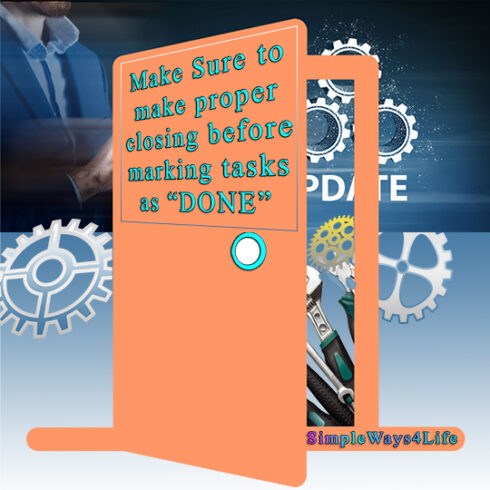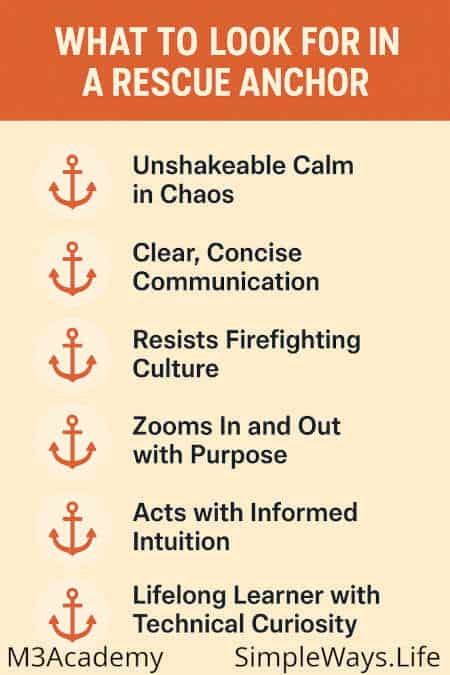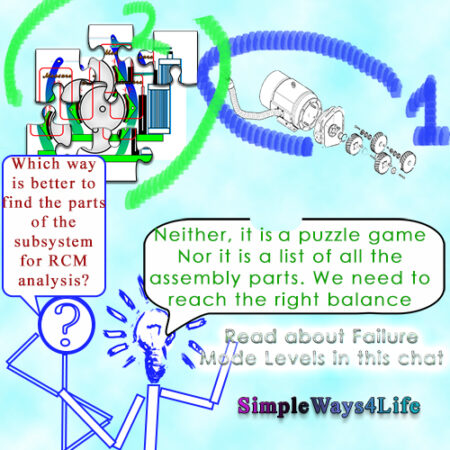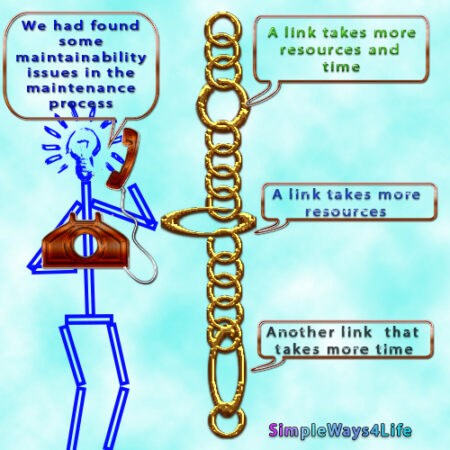Actually, proper closing of anything in your hand is not only the concern of project management or maintenance management. It should be part of everything we do life. The closing time is when you officially deliver the product. It is when you reach satisfaction of all concerned parties, release all resources and, document the lessons learned. That’s in order to be ready for the next better start of a similar or a different job.
As we had discussed together, the processes of classical project management are grouped into five (5) main process groups. Namely; initiation, planning, execution, control and closing. Project management is accomplished through the appropriate application and integration of the 42 logically grouped project management processes comprising the 5 Process Groups. If this previous definition about project management or any coming official PMBOK definition seems difficult to comprehend, you can return to our previous articles where we had simplified those concepts. Moreover you can find in those articles all the possible benefits that maintenance can gain from the well defined Project Management processes. You can find those articles in the below links:
- Maintenance, is it a project or a recurring job?
- Project planning processes that can help maintenance planning
- How to think of maintenance tasks execution as mini projects?
- The unspoken part of managing execution
- Monitoring and controlling maintenance from project perspectives
- From the project’s perspective, five (5) things to monitor and control in maintenance
In this article, we are going to understand what does project management mean by the closing processes; and what lessons can the maintenance management gain from this knowledge.
What is the closing process group in project management?
Closing Process Group includes those processes performed to finalize all activities across all Process Groups to formally close the project or phase of the project.
PMBOK, Project Management Body Of Knowledge
When closing the project, the project manager will review all prior information to ensure that all project work is complete and that the project has met its objectives.
The Closing Process Group consists of those processes performed to finalize all activities across all other Project Management Process Groups to formally complete the project, phase, or contractual obligations. This Process Group, when completed, verifies the completion of all the other pre-defined processes within all the Process Groups. That’s in order to close the project or a project phase, as appropriate. And formally establishes that the project or project phase is complete. At project or phase closure, the following occur:
- Obtain acceptance by the customer or sponsor,
- Conduct post-project or phase-end review,
- Record impacts of tailoring to any process,
- Document lessons learned,
- Then, apply appropriate updates to organizational process assets,
- Finally, Archive all relevant project documents in the Project Management Information System (PMIS)in preparation for future use as historical data, and
- Close out procurements.
How maintenance management can benefit from the knowledge of the project management closing group ?
In other words, to make it simpler, any activity needs some closing steps. Most important closing step will verify that this activity delivered the intended target. Then, any related documentation as workorder is filled with the execution results and feedback. Finally, the feedback data, comments or remarks updates the maintenance program and the planning data for next tasks. Simply, the closing steps closes the current task and initializes a new cycle for the same task or fires the need for other tasks discovered during the execution.
Think about it in the closing of any activity or a group of activities as in a regular maintenance shutdown day. Sometimes there is no feedback, i.e. the maintenance team just mark it done in the backlog and that’s all. This means that there is no actual data for further analysis. It means also that who planned the task did not specify a closing criteria. A closing criteria can be some measures taken to verify that the equipment is in the condition we want to achieve by doing this maintenance. Those measures need to be a mix of status measures during maintenance, like gap in mm, level, response time, or visual color and, some operational flow, pressure, ampere or load. It is recommended to include the feedback sheet some specific figures like start and end time, who was there and the parts used; to verify the planning effort.
Then, there should be a space for free comments. Absence of these comments might seem healthy i.e. everything is according to plan. However, it might indicate the team disengagement. Moreover, you won’t find a space for improvement.
How to emphasize the importance of proper closing of the maintenance tasks?
Not only writing a feedback is important, but there should be someone who reads those comments. When reading a comment, make an indication that you noticed the feedback. This can be through discussion, writing a comment on the feedback, taking an action or making an update. Acting upon feedback gives life to the feedback process and fuels it.
However, if the comments usually includes claims, blame and no suggestions, a discussion around these blames is vital. Most of the time the reason of these blames is unclear responsibility matrix. In other words, the job description and responsibilities are not clear enough that every team member knows what he should do. Sometimes, this confusion is the result of gaps in the planning. This happens when there is a task needed to complete the maintenance activity. However, this task is never mentioned anywhere. So, no one knows who should do it. In a balanced work environment you may find some volunteers or responsible team members who complete those gaps willingly. But, there will be others who intentionally escapes those gaps. Unfortunately with time, those volunteers won’t be that happy when they notice that others refuse to do the task they are volunteering for.
The best solution is to encourage everyone to make a feedback. A feedback with criticism that planning is incomplete or there are some difficulties in execution should not be offensive. It should be in the form of a recommendation so that they are sure that it will find someone who cares about it. Taking action regarding the feedback includes correcting the mistakes, updating the system or program or, explaining why this recommendation is not valid in an inoffensive way.
Project closing processes Vs Maintenance closing processes
This comparison is based on the fact that a project is a temporary endeavor that is never repeated in a typical way while regular maintenance -not major repairs- are similar recurring tasks. You can consider annual shutdowns, major shutdowns that come every few years, major repair due to a failure or upgrade as projects. Thus apply the typical project mindset in closing upon them. In the following comparison we shall demonstrate how you can map the project’s closing processes to maintenance regular tasks.
Project Closing
- Obtain acceptance by the customer or sponsor,
- Conduct post-project or phase-end review,
- Record impacts of tailoring to any process,
- Document lessons learned,
- Then, apply appropriate updates to organizational process assets,
- Finally, Archive all relevant project documents in the Project Management Information System (PMIS)in preparation for future use as historical data, and
- Close out procurements.
Maintenance Closing
- Hand over to operations and test performance after maintenance
- Create checklist with steps and measures that denote completion,
- Record any step that is not performed according to the SOP,
- Document the feedback,
- Then, apply appropriate updates to assets maintenance program/ plan,
- Finally, Enter all relevant documents as workorder in the system of Maintenance Management whether manual or automated in preparation for future use of this data, and
- Send any comments on parts or outsourced resources to procurements
- Initiate the next cycle for this task or any found out additional tasks
Why PM processes can be a valuable source for maintenance?
Project management and its processes are internationally recognized to be successful in managing all sizes of projects. Moreover, millions of practitioners apply the guides in the PMBOK -Project Management Body of Knowledge-. Then, the PMI -Project maintenance Institute- is welcoming to update the PM -Project Management- process and creates new releases every few years that are revolutionary and reflecting how the PMPs -Project Management Professionals- takes the Pm Book processes to the next level. The target of these upgrades is to elevate the professionality of all PMPs allover the world. So, the PM processes are valuable resource that we can build upon even if we are not in the project management field. PMI has this initiative that is teaches school staff and students to create a projectized school and life experience.
In Conclusion,
That’s why we try to select some lessons learned from the Project Management profession that can fit in the maintenance world. This article emphasized on the importance of properly closing the maintenance task(s) with practical steps. It includes the Project Management closing processes and mapping them into clear maintenance activities with explanation and examples. The intention behind introducing this PM knowledge is to elevate the maintenance processes performance. Maintenance is a profession, a life style and a never ending lifelong experience.
If you feel you need help with any of these ideas we discussed, request a Management Consultancy or Coaching Services From our Store








